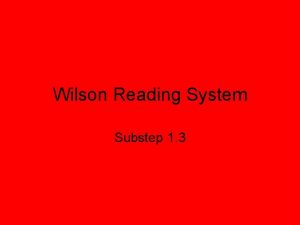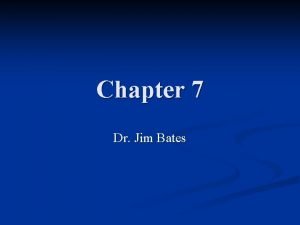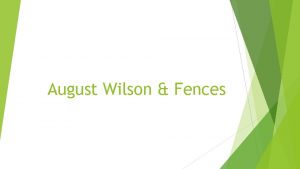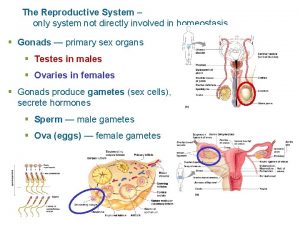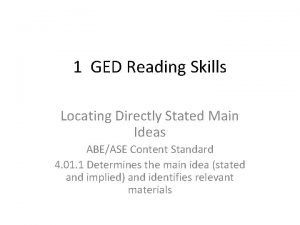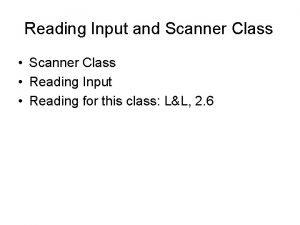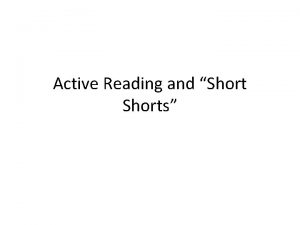Why Wilson The Wilson Reading System directly and


















- Slides: 18

Why Wilson? The Wilson Reading System directly and systematically teaches students how to fluently and accurately decode. It is unlike traditional phonics programs in that instruction is interactive and multi-sensory. It also thoroughly teaches total word construction, not just phonics. Students learn to encode (spell) as they learn to decode.

§ The ability to read and comprehend depends upon rapid and automatic recognition and decoding of words. § According to research, slow and inaccurate decoding are the best predictors of difficulties in reading comprehension. § The Wilson Reading System is based on the multisensory language techniques and principles first described by Dr. Samuel Ortin, Anna Gillingham, and Betsy Stillman.

Who Is This System Designed For? § The Wilson Reading System is designed for students who struggle with decoding and spelling. WRS directly teaches the English language. It is appropriate for students who have not internalized the sound and syllable system for reading and spelling.

This Program Will Greatly Benefit: § Students unable to decode accurately § slow, labored readers who lack fluency § may know words by sight § often guess at words § Students able to speak and understand English, but not read or write it. § Extremely poor spellers § Students unsuccessful with other reading programs or who still have gaps in their decoding and/or spelling.

Where to Begin § Pre-testing: The WADE should be administered to the student before the program is initiated. Standardized reading and spelling tests are also recommended.

WRS Lesson Components § Word Study: § § § Phonemic awareness Decoding Vocabulary Single word accuracy/automaticity Phrasing/prosody § Spelling: § Spelling § Proofreading § Vocabulary § Fluency/Comprehension: § § § Fluency Vocabulary Comprehension Visualization Oral language skills

Part 1 - Sound Card Quick Drill § § Do as a warm-up Say letter and name sound Always do vowels: letter-keyword-sound Other sounds (be selective): letter-sound

Part 2 - Teach and Review Concepts For Reading § Make 3 -4 review words. § Teach current words with card manipulation with 5 -8 new words. § Include trouble spots from previous lessons. § Weave questions about word structure.

Part 3 - Word Cards § Start with review cards from previous sub -steps to work towards automaticity. § Read high frequency words.

Part 4 - Wordlist Reading § Wordlist practice: § Read words individually § Target trouble spots § Charting: § § § Chart students Discuss errors Use as an assessment to determine pacing.

Part 5 - Sentence Reading § Students read sentences silently, then orally § Goal: Complete 5 sentences

Part 6 - Quick Drill in Reverse § Teacher says sounds; students repeat. § Students point to magnetic tiles to answer.

Part 7 - Teach & Review Concepts for Spelling § § § Teacher dictates word Students repeat word Students tap sounds Students find letters Students orally spell the word while tapping

Part 8 - Written Work Dictation § Students work with dictation pages § Teacher dictates: § § 5 sounds 5 real words 5 nonsense words 1 -2 sentences § § § Students repeat, answer, then write Proofread sentences Students read back and mark up

How to Mark Up Words Digraphs: Baseword/Suffix: shed chin thick dogs chips banks Glued/Welded: Blends: ring thank ham trip plan strap

Part 9 - Controlled Text Passage Reading § § § Select a Wilson controlled passage Students read silently Students read orally and retell

Part 10 - Listening Comprehension/Applied Skills § § § Set schema Teacher reads enriched passage Students retell

Additional Thoughts for Classroom Teachers & Parents § It is important for parents and teachers to understand that WRS students learn the English language step-by-step. Initially they may be unable to transition to non-controlled texts. As they progress in the program, more may be done independently by the students and they can begin reading non-controlled text. § Progress should be clearly evident on the WADE if the student is responding to the program.
 Andreas carlsson bye bye bye
Andreas carlsson bye bye bye While reading activities
While reading activities Wilson reading system sound cards
Wilson reading system sound cards Dont ask why why why
Dont ask why why why 3. why is myrtle wilson upset when she sees tom and jordan?
3. why is myrtle wilson upset when she sees tom and jordan? Lesson 3 the wilson years
Lesson 3 the wilson years Wilson language system
Wilson language system Why did the allies reject wilson's peace plan
Why did the allies reject wilson's peace plan What are the aims of teaching reading?
What are the aims of teaching reading? What are types of reading
What are types of reading What is extensive reading
What is extensive reading What is intensive reading
What is intensive reading Types of reading skill
Types of reading skill Why does george wilson lock myrtle in the bedroom
Why does george wilson lock myrtle in the bedroom What does gatsby tell nick the night of the accident
What does gatsby tell nick the night of the accident Space bar
Space bar Hình ảnh bộ gõ cơ thể búng tay
Hình ảnh bộ gõ cơ thể búng tay Lp html
Lp html Bổ thể
Bổ thể


